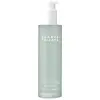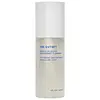What's inside
What's inside
 Key Ingredients
Key Ingredients

 Benefits
Benefits

 Concerns
Concerns

No concerns
 Ingredients Side-by-side
Ingredients Side-by-side

Water
Skin ConditioningCoco-Glucoside
CleansingDisodium Cocoamphodiacetate
CleansingSodium Lauroamphoacetate
CleansingGlycerin
HumectantAloe Barbadensis Leaf Juice
Skin ConditioningArginine
MaskingAspartic Acid
MaskingGlycine
BufferingAlanine
MaskingSerine
MaskingValine
MaskingProline
Skin ConditioningThreonine
Isoleucine
Skin ConditioningHistidine
HumectantPhenylalanine
MaskingSodium PCA
HumectantSodium Lactate
BufferingTocopheryl Acetate
AntioxidantSea Salt
AbrasiveHelianthus Annuus Seed Oil
EmollientPCA
HumectantPhytosteryl/Octyldodecyl Lauroyl Glutamate
Skin ConditioningEthylhexylglycerin
Skin ConditioningTetrasodium Glutamate Diacetate
Citric Acid
BufferingAcrylates/C10-30 Alkyl Acrylate Crosspolymer
Emulsion StabilisingPhenoxyethanol
PreservativeParfum
MaskingLimonene
PerfumingWater, Coco-Glucoside, Disodium Cocoamphodiacetate, Sodium Lauroamphoacetate, Glycerin, Aloe Barbadensis Leaf Juice, Arginine, Aspartic Acid, Glycine, Alanine, Serine, Valine, Proline, Threonine, Isoleucine, Histidine, Phenylalanine, Sodium PCA, Sodium Lactate, Tocopheryl Acetate, Sea Salt, Helianthus Annuus Seed Oil, PCA, Phytosteryl/Octyldodecyl Lauroyl Glutamate, Ethylhexylglycerin, Tetrasodium Glutamate Diacetate, Citric Acid, Acrylates/C10-30 Alkyl Acrylate Crosspolymer, Phenoxyethanol, Parfum, Limonene
Water
Skin ConditioningGlycerin
HumectantPropanediol
SolventDecyl Glucoside
CleansingCaprylyl Caprylate
EmollientCaprylyl Glucoside
CleansingCassia Angustifolia Seed Polysaccharide
Skin ConditioningChamomilla Recutita Flower Extract
MaskingHelianthus Annuus Extract
EmollientCitrus Aurantium Dulcis Fruit Water
MaskingCitrus Limon Fruit Water
MaskingHelianthus Annuus Seed Oil
EmollientPersea Gratissima Oil
Skin ConditioningVitis Vinifera Seed Oil
EmollientRosmarinus Officinalis Leaf Extract
AntimicrobialPyrus Malus Fruit Extract
Skin ConditioningOryza Sativa Bran Extract
Skin ConditioningSerine
MaskingAlanine
MaskingGlycine
BufferingLysine Hcl
Skin ConditioningThreonine
Arginine
MaskingProline
Skin ConditioningHydrogenated Palm Glycerides Citrate
EmollientHeptyl Glucoside
Phenoxyethanol
PreservativeDehydroxanthan Gum
Emulsion StabilisingCoco-Glucoside
CleansingGlyceryl Oleate
EmollientCaprylyl Glycol
EmollientGlutamic Acid
HumectantPCA
HumectantCitric Acid
BufferingTrisodium Ethylenediamine Disuccinate
Tocopherol
AntioxidantBetaine
HumectantPotassium Hydroxide
BufferingPotassium Sorbate
PreservativeSodium Benzoate
MaskingSodium Lactate
BufferingSodium PCA
HumectantWater, Glycerin, Propanediol, Decyl Glucoside, Caprylyl Caprylate, Caprylyl Glucoside, Cassia Angustifolia Seed Polysaccharide, Chamomilla Recutita Flower Extract, Helianthus Annuus Extract, Citrus Aurantium Dulcis Fruit Water, Citrus Limon Fruit Water, Helianthus Annuus Seed Oil, Persea Gratissima Oil, Vitis Vinifera Seed Oil, Rosmarinus Officinalis Leaf Extract, Pyrus Malus Fruit Extract, Oryza Sativa Bran Extract, Serine, Alanine, Glycine, Lysine Hcl, Threonine, Arginine, Proline, Hydrogenated Palm Glycerides Citrate, Heptyl Glucoside, Phenoxyethanol, Dehydroxanthan Gum, Coco-Glucoside, Glyceryl Oleate, Caprylyl Glycol, Glutamic Acid, PCA, Citric Acid, Trisodium Ethylenediamine Disuccinate, Tocopherol, Betaine, Potassium Hydroxide, Potassium Sorbate, Sodium Benzoate, Sodium Lactate, Sodium PCA
Ingredients Explained
These ingredients are found in both products.
Ingredients higher up in an ingredient list are typically present in a larger amount.
Alanine is an amino acid and is already found in the human body. Our skin uses alanine to build collagen, elastin, and keratin.
Arginine is an amino acid that is important for human development. Your body uses is it to produce hair keratin and skin collagen.
As a cosmetic ingredient, Arginine has antioxidant properties and can also help repair damaged skin. This ingredient is derived either synthetically or from animals.
Arginine isn't fungal acne safe when used in the presence of other lipids (fats, fatty acids, oils, esters, etc). Oils and fats occur naturally within the skin, so take caution when using Arginine if you're prone to fungal acne.
Learn more about ArginineCitric Acid is an alpha hydroxy acid (AHA) naturally found in citrus fruits like oranges, lemons, and limes.
Like other AHAs, citric acid can exfoliate skin by breaking down the bonds that hold dead skin cells together. This helps reveal smoother and brighter skin underneath.
However, this exfoliating effect only happens at high concentrations (20%) which can be hard to find in cosmetic products.
Due to this, citric acid is usually included in small amounts as a pH adjuster. This helps keep products slightly more acidic and compatible with skin's natural pH.
In skincare formulas, citric acid can:
While it can provide some skin benefits, research shows lactic acid and glycolic acid are generally more effective and less irritating exfoliants.
Most citric acid used in skincare today is made by fermenting sugars (usually from molasses). This synthetic version is identical to the natural citrus form but easier to stabilize and use in formulations.
Read more about some other popular AHA's here:
Learn more about Citric AcidCoco-Glucoside is a surfactant, or a cleansing ingredient. It is made from glucose and coconut oil.
Surfactants help gather dirt, oil, and other pollutants from your skin to be rinsed away.
This ingredient is considered gentle and non-comedogenic. However, it may still be irritating for some.
Learn more about Coco-GlucosideGlycerin is already naturally found in your skin. It helps moisturize and protect your skin.
A study from 2016 found glycerin to be more effective as a humectant than AHAs and hyaluronic acid.
As a humectant, it helps the skin stay hydrated by pulling moisture to your skin. The low molecular weight of glycerin allows it to pull moisture into the deeper layers of your skin.
Hydrated skin improves your skin barrier; Your skin barrier helps protect against irritants and bacteria.
Glycerin has also been found to have antimicrobial and antiviral properties. Due to these properties, glycerin is often used in wound and burn treatments.
In cosmetics, glycerin is usually derived from plants such as soybean or palm. However, it can also be sourced from animals, such as tallow or animal fat.
This ingredient is organic, colorless, odorless, and non-toxic.
Glycerin is the name for this ingredient in American English. British English uses Glycerol/Glycerine.
Learn more about GlycerinThis ingredient is an amino acid that helps build proteins and moisturizes skin. It is already present in our skin as our bodies produce them naturally.
Glycine already plays a role in helping keep our skin moisturized as amino acids transport moisture throughout our skin.
As collagen is made up of glycine and other amino acids, it is believed glycine may help our skin produce more collagen.
Learn more about GlycineHelianthus Annuus Seed Oil is the oil derived from the seeds of a Sunflower. Sunflower seed oil is non-fragrant. It is an emollient, meaning it helps to soften the skin.
Sunflower seed oil contains many fatty acids. The fatty acids found in sunflower seeds include (from highest amount to least): linoleic acid, myristic acid, palmitic acid, stearic acid, arachidic acid, oleic acid, and linolenic acid.
These fatty acids help the skin create ceramides. Ceramides play a role in repairing the skin barrier.
Helianthus Annuus Seed Oil helps moisturize the skin. This in turn helps the skin look more rejuvenated and smoother.
Sunflowers are rich in vitamin E.
Historians believe Indigenous cultures of North America domesticated sunflowers before corn. Thus they relied on sunflower oil for a variety of uses. One such use is moisturizing skin and hair.
Sunflower seed oil may not be fungal acne safe. We recommend speaking with a professional if you have any concerns.
Learn more about Helianthus Annuus Seed OilPCA is derived from amino acids and is naturally found in our skin's barrier.
As a humectant, PCA helps draw and hold moisture to the skin. Studies show it is effective at helping the skin stay hydrated long-term.
Phenoxyethanol is a preservative that has germicide, antimicrobial, and aromatic properties. Studies show that phenoxyethanol can prevent microbial growth. By itself, it has a scent that is similar to that of a rose.
It's often used in formulations along with Caprylyl Glycol to preserve the shelf life of products.
Proline is an amino-acid. It helps moisturize the skin and plays an important role in creating proteins.
Our skin uses proline as one of the building blocks for producing collagen.
In medicine, proline is used as an osmoprotectant. This means it helps prevent oxidative degradation in other drugs.
Our bodies are able to produce proline naturally, but certain conditions may inhibit this production. In that case, proline can be obtained from eating egg whites, soy protein, dairy products, asparagus, mushrooms, and seaweed.
Learn more about ProlineSerine is an amino acid naturally found in our body. Our bodies use amino acids to create protein.
Amino-acids help give keep our skin hydrated. They play an important role in the skin barrier, which keeps the skin plump and firm.
Serine is a non-essential amino acid, meaning we don't need to obtain it from eating foods.
Learn more about SerineSodium Lactate is the sodium salt of lactic acid, an AHA. It is a humectant and sometimes used to adjust the pH of a product.
This ingredient is part of our skin's NMF, or natural moisturizing factor. Our NMF is essential for the hydration of our top skin layers and plasticity of skin. NMF also influences our skin's natural acid mantle and pH, which protects our skin from harmful bacteria.
High percentages of Sodium Lactate can have an exfoliating effect.
Fun fact: Sodium Lactate is produced from fermented sugar.
Learn more about Sodium LactateSodium PCA is the sodium salt of pyroglutamic acid. It is naturally occurring in our skin's natural moisturizing factors where it works to maintain hydration.
The PCA stands for pyrrolidone carboxylic acid, a natural amino acid derivative.
This ingredient has skin conditioning, anti-inflammatory, and humectant properties. Humectants help hydrate your skin by drawing moisture from the air. This helps keep your skin moisturized.
Learn more about Sodium PCAThreonine is an amino-acid. It helps hydrate the skin and has antioxidant benefits.
Our skin uses threonine for creating collagen and elastin. Humans are not able to create threonine and must get it through eating foods such as fish, lentils, poultry, sesame seeds, and more.
Water. It's the most common cosmetic ingredient of all. You'll usually see it at the top of ingredient lists, meaning that it makes up the largest part of the product.
So why is it so popular? Water most often acts as a solvent - this means that it helps dissolve other ingredients into the formulation.
You'll also recognize water as that liquid we all need to stay alive. If you see this, drink a glass of water. Stay hydrated!
Learn more about Water